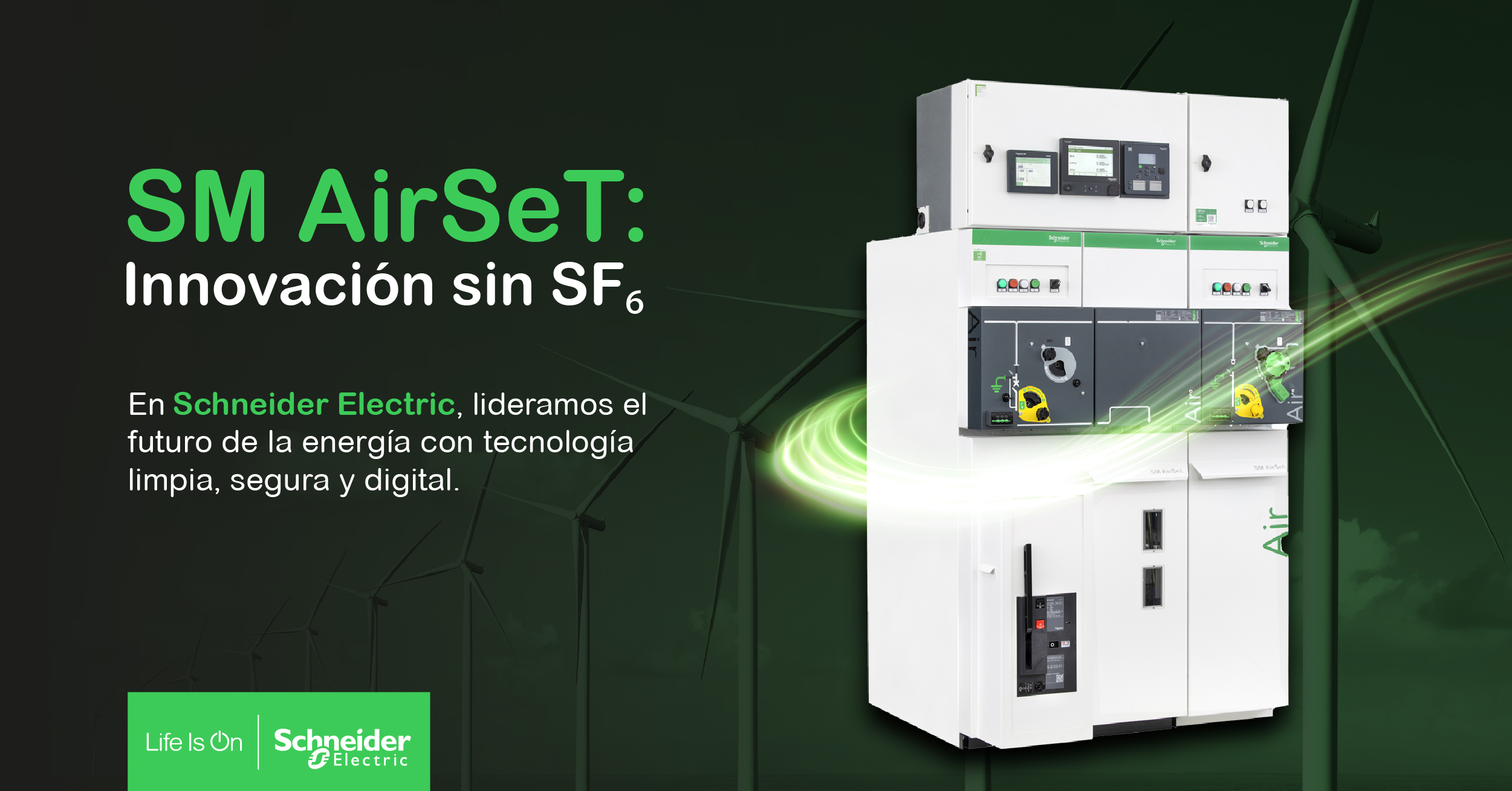
At the event, the company will highlight its SM AirSeT solution: a medium-voltage switchgear that replaces the use of polluting gases with pure air, while also integrating digital capabilities for more efficient and sustainable energy management.
Schneider Electric, a global leader in efficient energy management and automation, will participate in Hyvolution Chile 2025 with a proposal aligned with the current challenges of the energy sector: reducing the environmental footprint of electrical infrastructure without compromising operational reliability. In this scenario, the multinational will present SM AirSeT, an innovative medium-voltage solution that replaces SF6 gas—which has a high global warming potential—with pure air as an insulating medium.
Schneider Electric’s presence at this meeting, considered the country’s leading B2B event on green hydrogen and clean technologies, reinforces its commitment to developing solutions that enable the decarbonisation of energy infrastructure. The multinational has been recognised as the world’s most sustainable company by Time and Statista, and its participation in the event highlights the role that clean and digitalised technologies can play in various sectors.
For years, copper hexafluoride (SF6) has been widely used in medium-voltage equipment for its insulating properties. However, due to its high potential for environmental impact, different regions of the world have begun to promote its replacement with more responsible alternatives. In this context, SM AirSeT offers a concrete response, which has already been validated through multiple implementations and industrial pilots globally.
An adaptable, efficient and future-oriented solution
Designed to meet current operating standards, this compact, modular and digital solution has a high capacity for integration in different environments. It incorporates CompoDrive technology, which increases its mechanical resistance and extends the useful life of the equipment by allowing a greater number of manoeuvres without compromising its performance.
Its connectivity allows real-time data collection and analysis, optimising operation and anticipating potential failures. This continuous monitoring capability, together with wireless temperature and humidity sensors, allows seamless integration with supervision and control systems, facilitating intelligent and preventive energy management.
One of the main benefits of this solution is that it eliminates the costs associated with the handling, control and recycling of fluorinated gases. In addition, it significantly reduces maintenance requirements, which translates into lower operating costs and greater availability of electrical infrastructure.
With this solution, Schneider Electric seeks to contribute to the evolution of the Chilean energy system, offering concrete tools to respond to the demands of sustainable electrification, especially in sectors that are moving towards the adoption of green hydrogen as a driver of transformation.